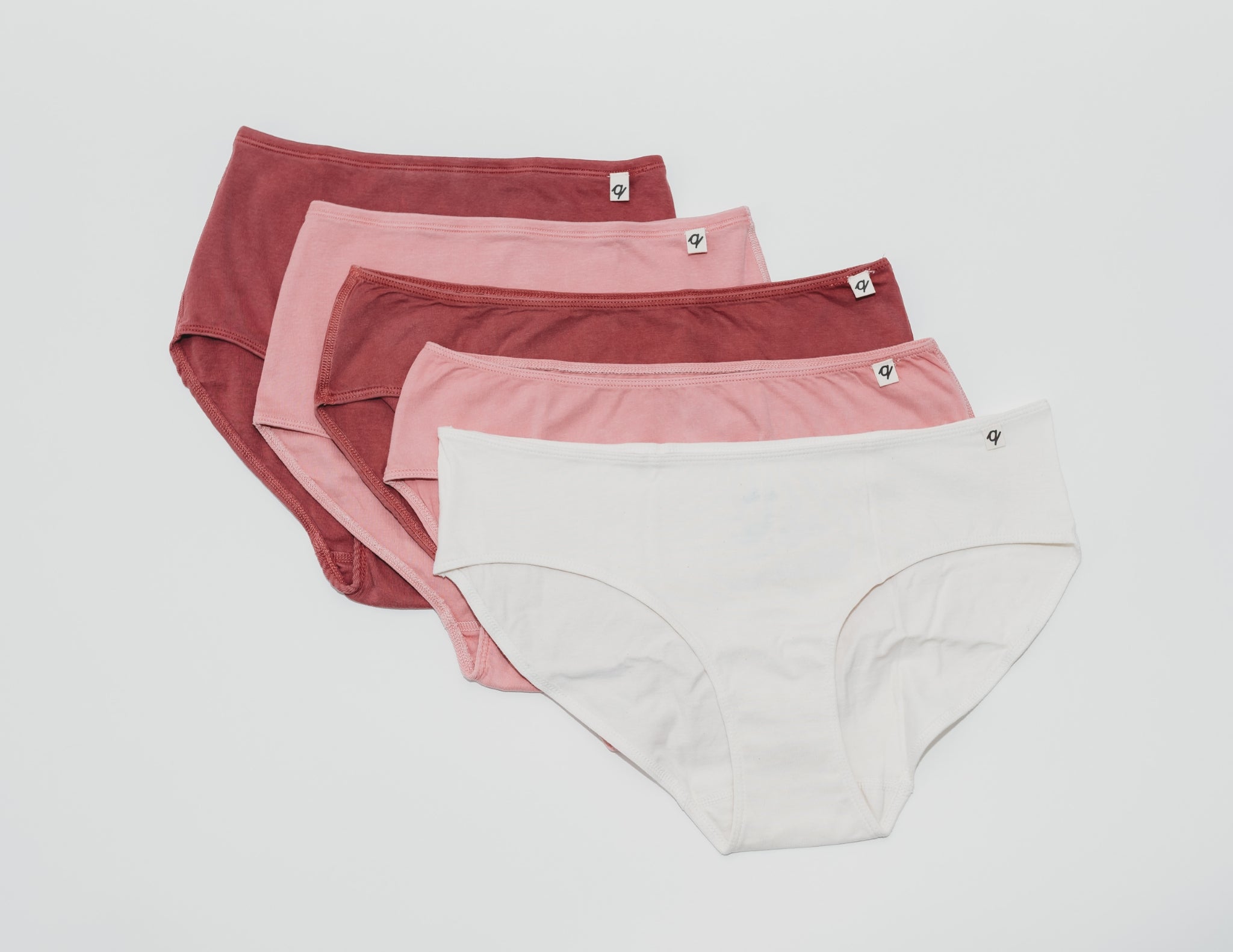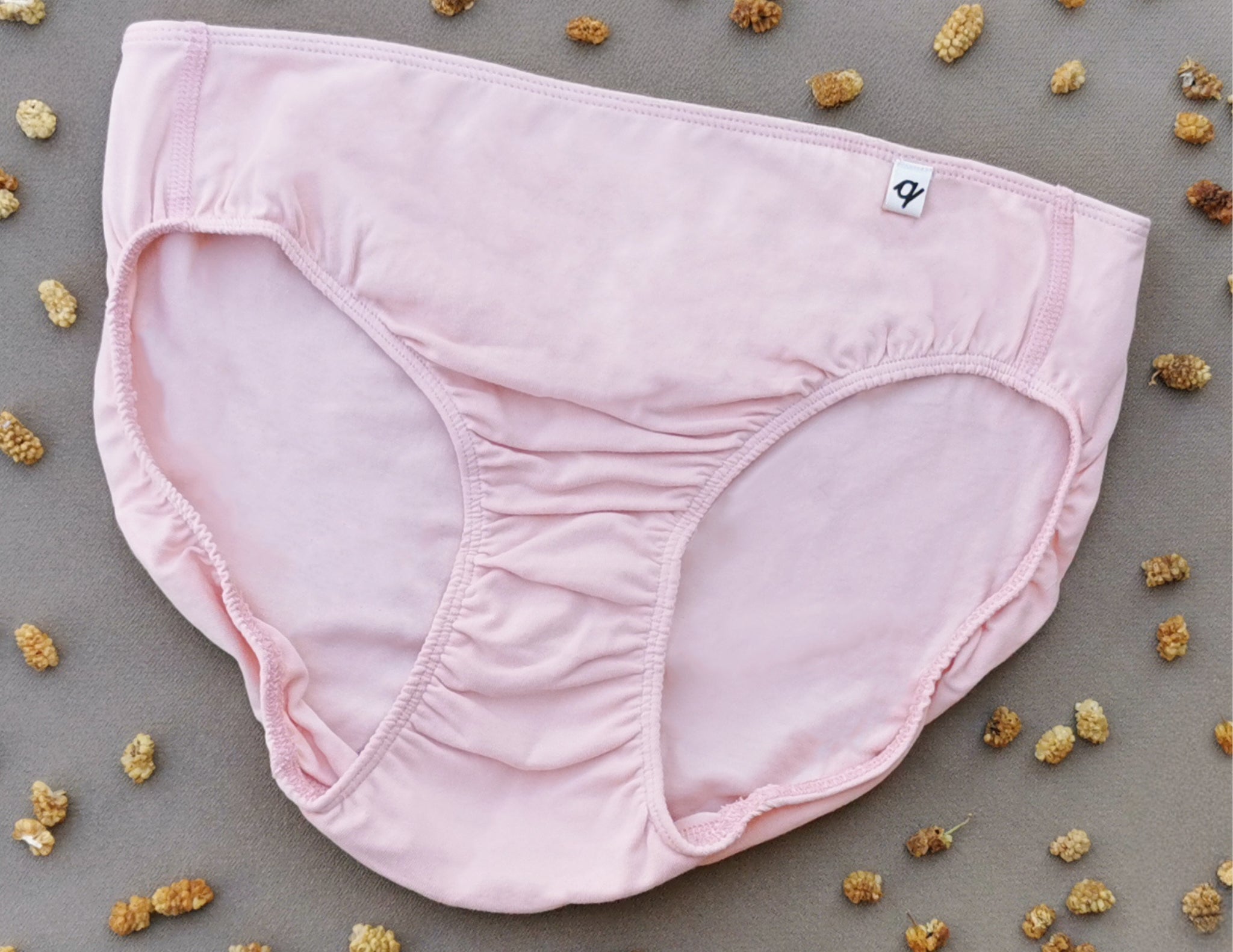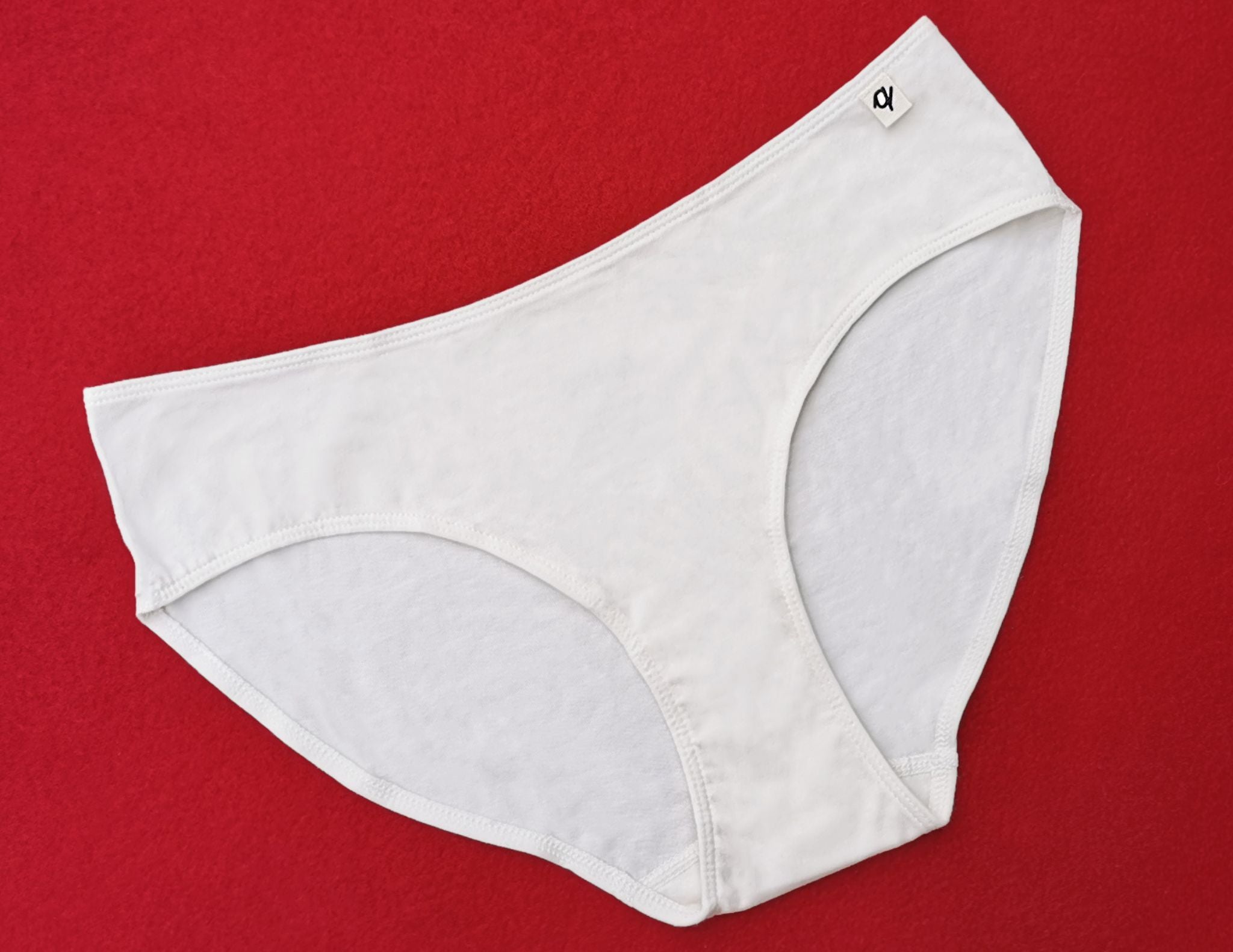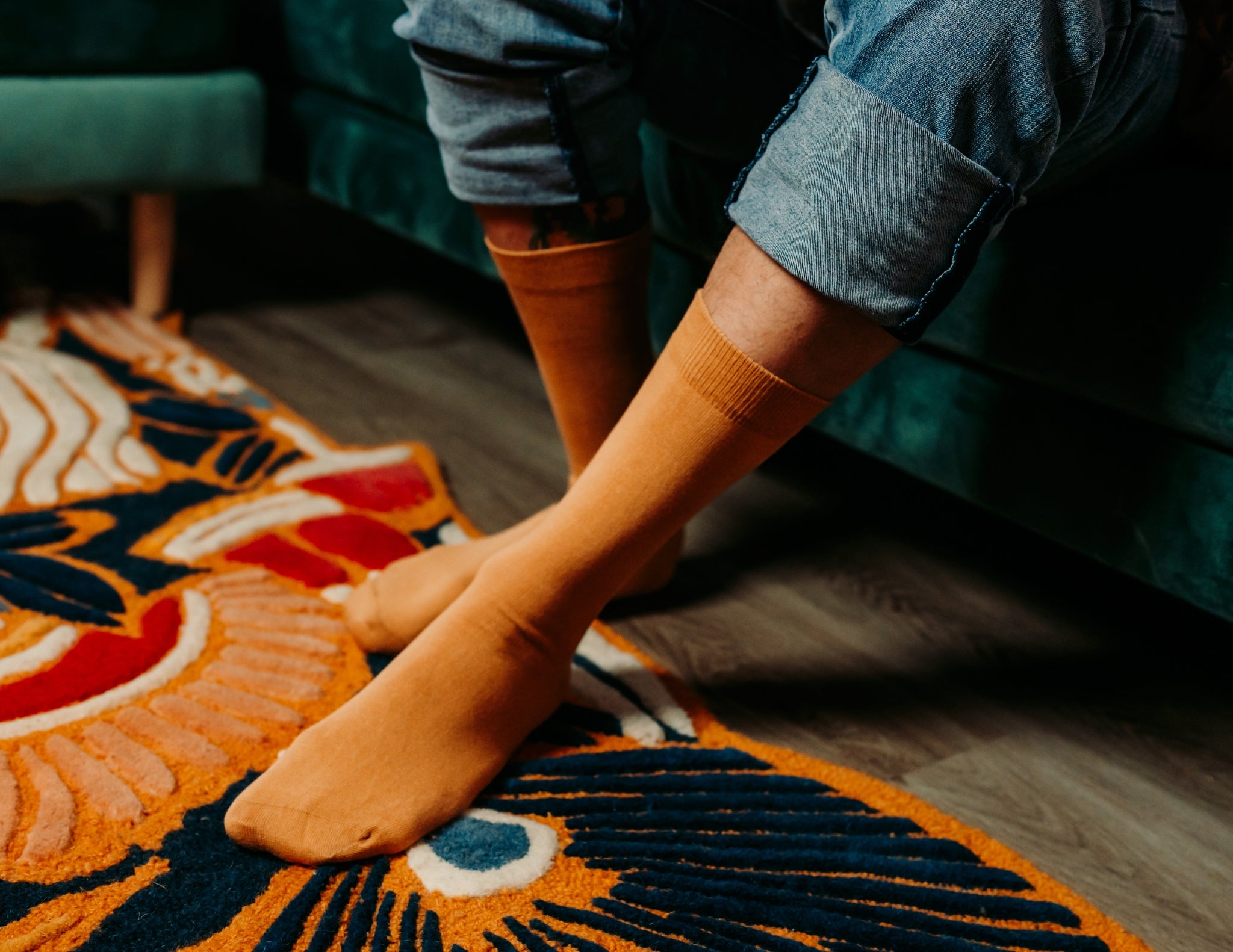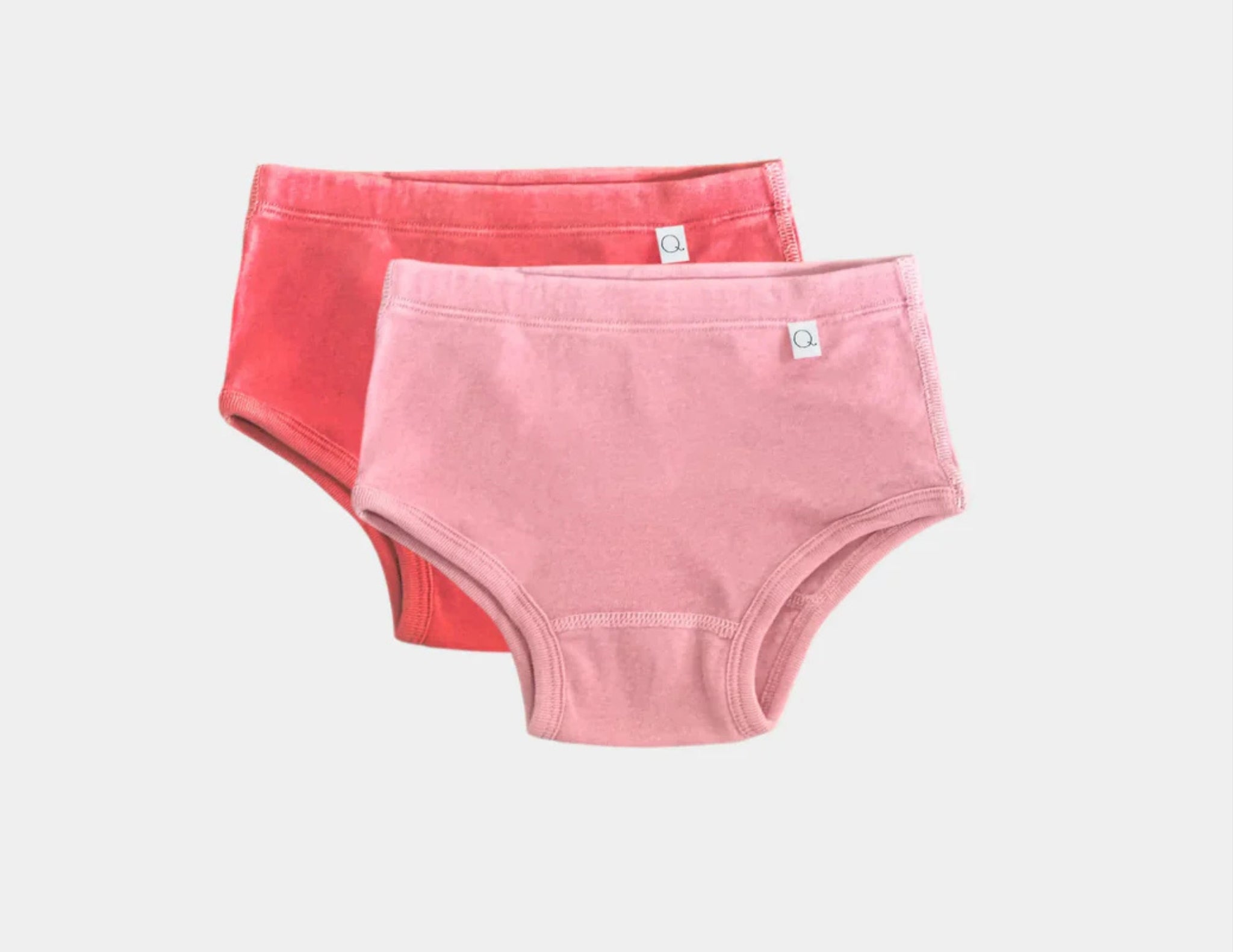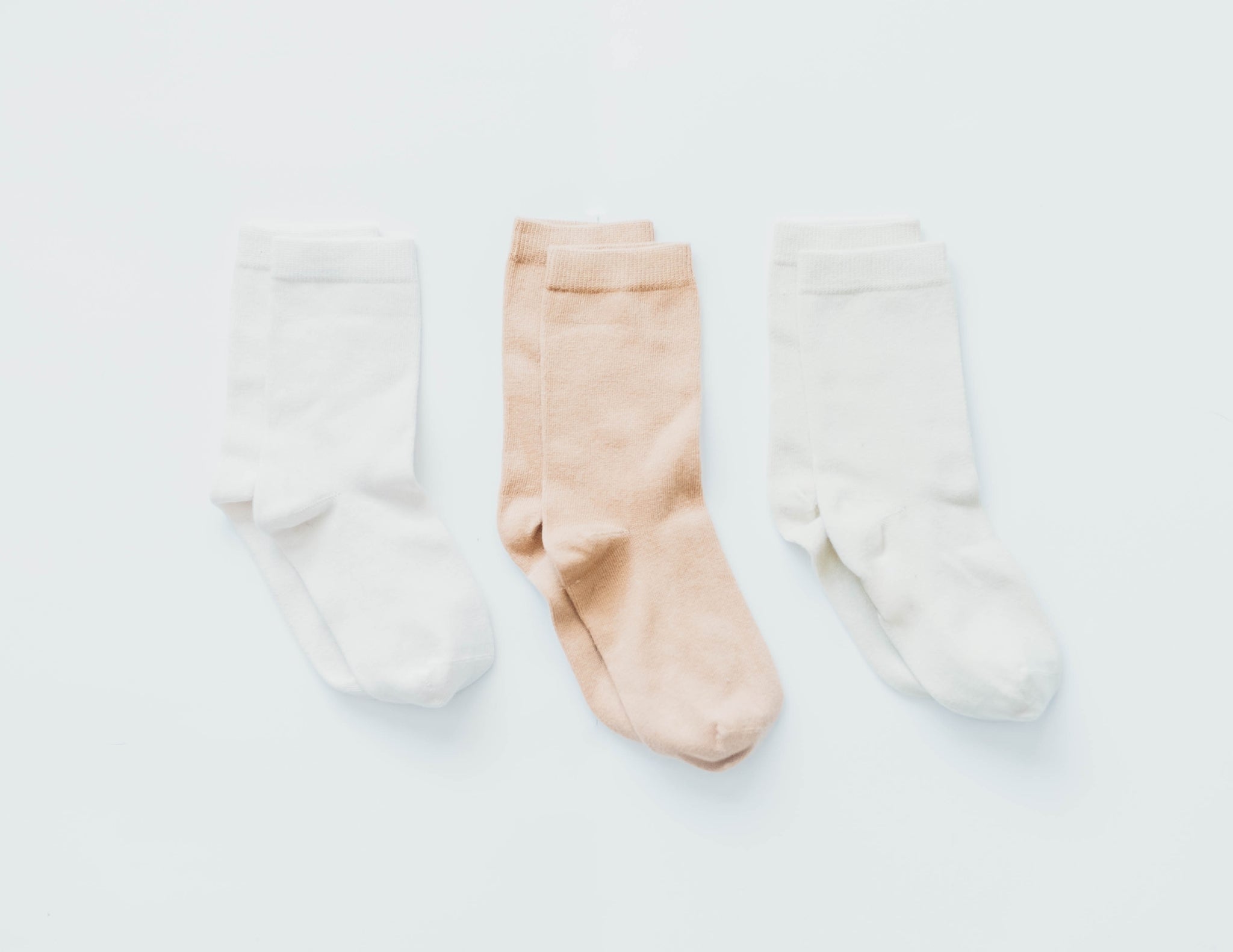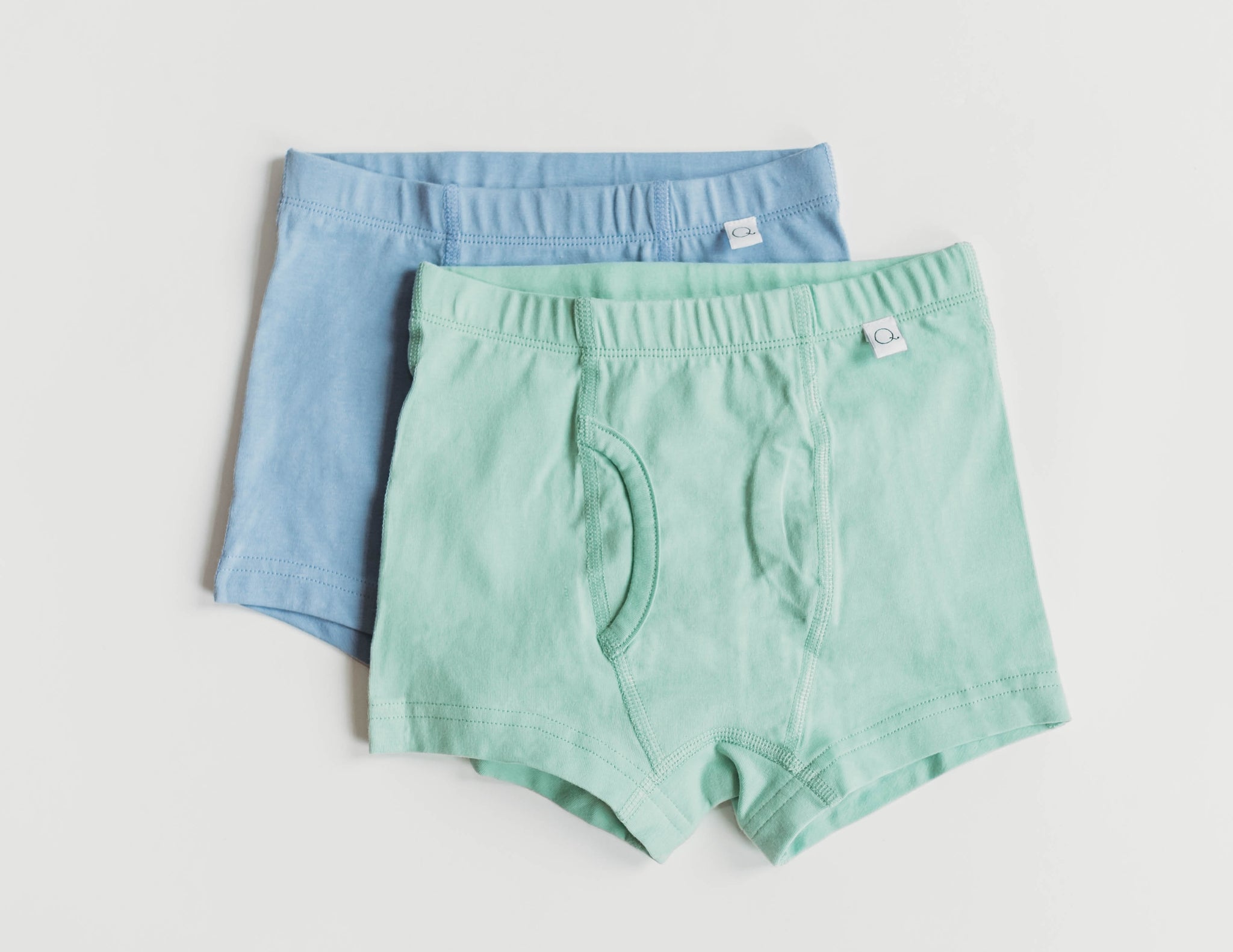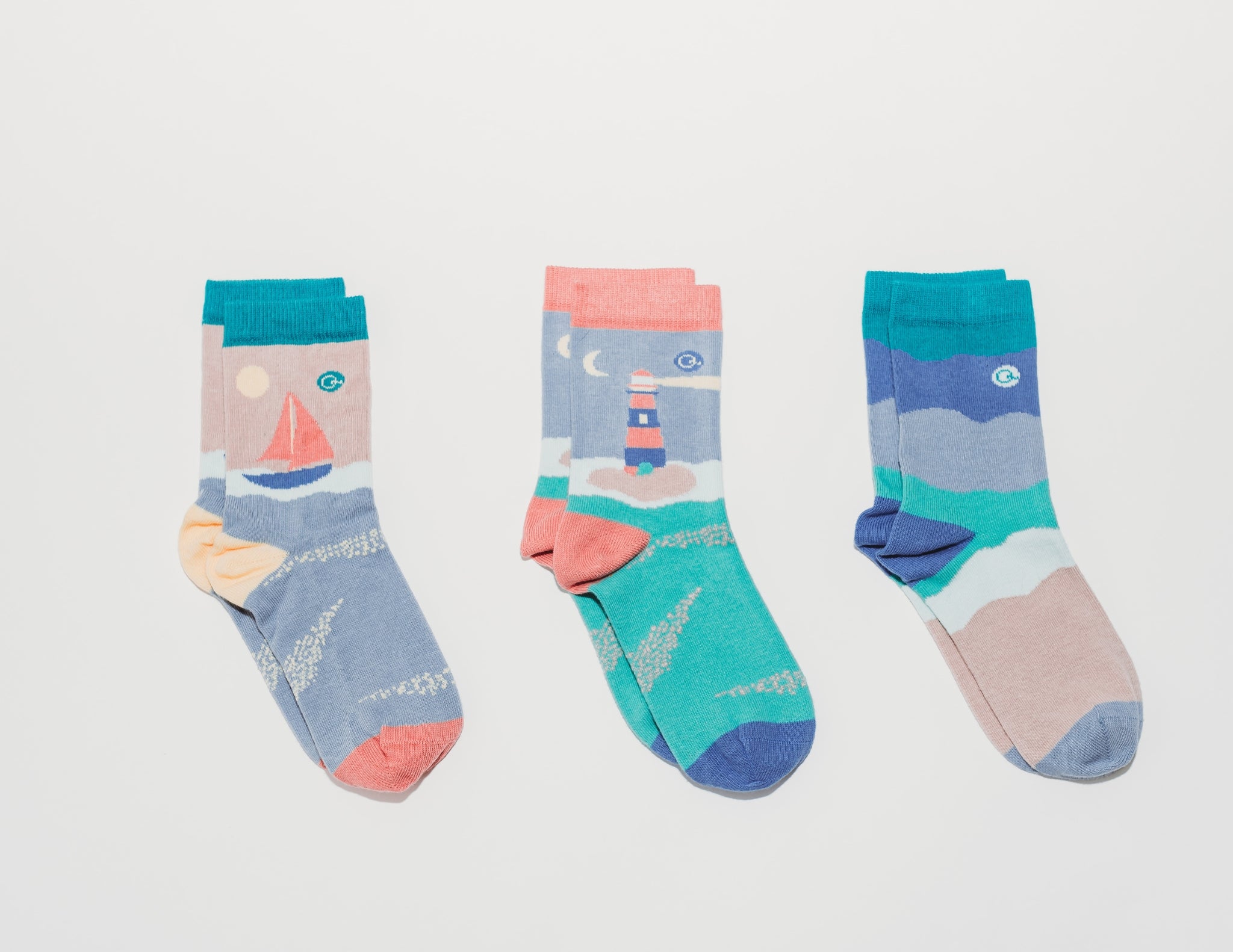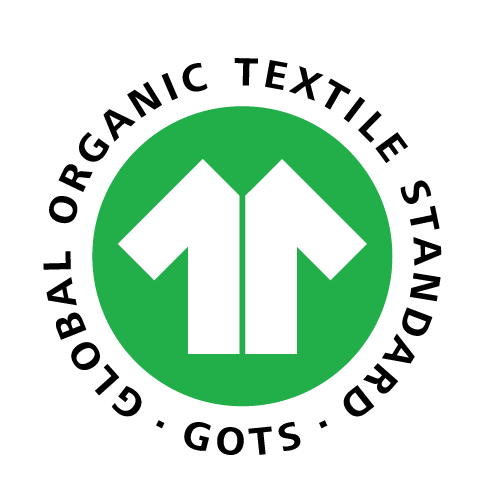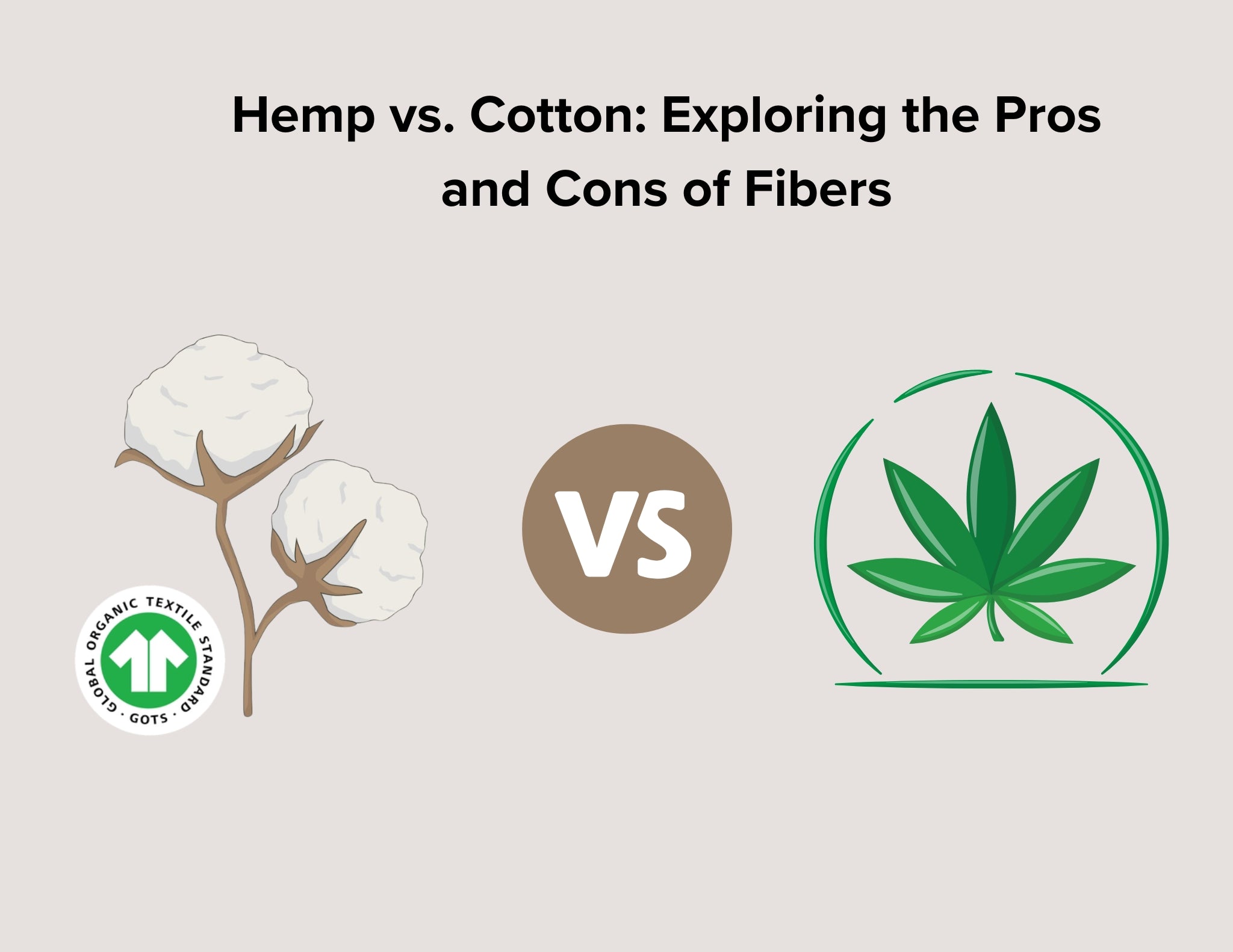
Hemp vs. Cotton: Exploring the Pros and Cons of Fibers
Choosing between hemp and cotton fabrics involves weighing various factors, including environmental impact, comfort, durability, and cost. Both are natural fibers and offer distinct advantages, but understanding their differences can help you make your choice. In this article, we focus specifically on hemp versus GOTS-certified organic cotton, examining how these options stack up against each other.
What is Hemp Fabric?
Hemp fabric is made from the Cannabis sativa plant's stalks—the same species as marijuana but with minimal THC content (below 0.3%). One of the oldest cultivated plants, hemp has been used for textiles for thousands of years.
- Strong, durable fibers that grow longer than cotton
- Natural resistance to pests, mold, and UV radiation
- Ability to grow in various climates with minimal resources
- Hollow fiber structure that provides natural temperature regulation
The production process involves harvesting the stalks, separating the fibers through retting (breaking down the pectin), and spinning these fibers into yarn that can be woven or knit into fabric.
The hemp plant grows quickly, reaching maturity in just 3-4 months, and can yield up to three times more fiber per acre than cotton. Its deep root system helps prevent soil erosion and can even remediate contaminated soils by absorbing toxins. However, hemp fabric production faces challenges, including limited processing infrastructure and inconsistent quality standards that can affect the final product.
What is GOTS-Certified Organic Cotton?
Regular cotton production typically involves:
- Heavy pesticide use (approximately 16% of global insecticides)
- Significant water consumption
- Synthetic fertilizers that can damage soil health
- Potential chemical residues in the final product
In contrast, GOTS-certified organic cotton:
- Prohibits toxic chemicals, GMOs, and synthetic pesticides
- Requires water conservation practices
- Maintains soil fertility through natural methods
- Ensures fair labor practices and safe working conditions
- Restricts processing chemicals and wastewater treatment
- Requires traceability throughout the supply chain
This certification guarantees that at least 95% of the fibers are organic and that all processing meets environmental and social responsibility standards.
The difference between organic and conventional cotton extends beyond the growing process. GOTS certification covers the entire supply chain, ensuring ethical labor practices and prohibiting harmful chemicals in processing, dyeing, and finishing. This comprehensive approach means organic cotton products are truly sustainable from field to final product, offering consumers peace of mind that isn't available with many other fibers, including hemp, which lacks such rigorous certification standards.
GOTS (Global Organic Textile Standard) certified organic cotton is a significant improvement over conventional cotton. This certification ensures the cotton meets strict environmental and social criteria throughout its production chain.
Organic cotton has evolved into a sophisticated agricultural system with decades of research behind it. Modern organic cotton farms use advanced techniques like precision irrigation, beneficial insect habitats, and soil microbiome management that maximize yield while minimizing environmental impact. The GOTS certification goes beyond simply prohibiting chemicals—it requires active environmental management and social responsibility. Similarly, OEKO-TEX® certification ensures that textiles are tested for harmful substances, adding an extra layer of safety for end users. When a product holds both GOTS and OEKO-TEX® labels, it reflects a strong commitment to both environmental integrity and consumer well-being.
Hemp vs. Organic Cotton Fabric: Comparison of Main Features and Benefits
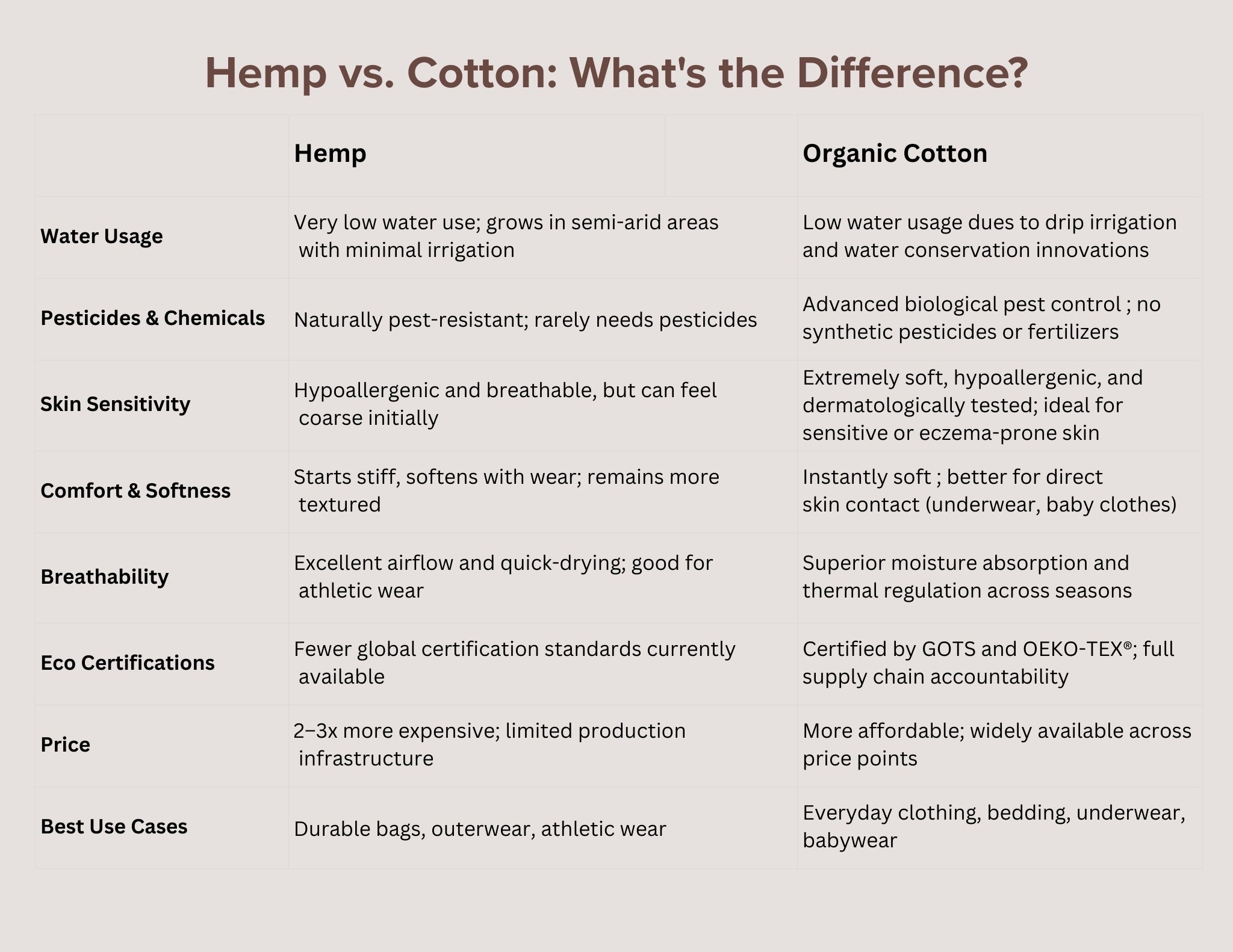
Water Usage in Hemp vs. Cotton
Modern organic cotton farming has made remarkable strides in water efficiency compared to conventional cotton. Organic cotton uses 91% less blue water (clean, fresh water from rivers, lakes, or groundwater) compared to conventional cotton. Most of the water organic cotton needs comes from natural sources like rain or moisture in the soil (called green water). Only a small part of it (about 3%) comes from irrigation or other farming processes.
The organic cotton industry has invested heavily in water conservation research, developing region-specific approaches that optimize water use based on local conditions. Many organic cotton farms now incorporate rainwater harvesting, greywater recycling, and precision irrigation that deliver water exactly when and where plants need it. These innovations have significantly narrowed the gap between hemp and cotton's water requirements.
Hemp is known for its water efficiency, requiring approximately 700-1,500 gallons of water to produce 2.2 pounds of fiber. Its deep root system accesses groundwater effectively, making it naturally drought-resistant and able to grow in semi-arid conditions with minimal irrigation.
Comparison: While hemp maintains an edge in raw water efficiency, organic cotton's water management systems make it a strong, environmentally responsible choice that continues to improve year after year.
Pesticides and Chemical Treatments
Organic cotton farming has developed biological pest control methods that represent some of the most advanced sustainable agriculture practices in the world. These include:
- Beneficial insect introduction programs that create balanced ecosystems
- Trap crop systems that divert pests from cotton plants
- Sophisticated crop rotation sequences that break pest cycles naturally
- Microbial soil amendments that strengthen plants' natural defenses
- Pheromone disruption techniques that prevent pest reproduction
The organic cotton industry has pioneered many of these techniques, creating a blueprint for sustainable agriculture that extends beyond just cotton production. These methods have been refined through decades of research and field testing, resulting in systems that maintain biodiversity while producing consistent yields.
Hemp possesses natural resistance to most pests and diseases, typically growing successfully with minimal or no pesticide applications. This inherent resistance comes from the plant's natural compounds that repel insects and resist fungal infections. Hemp's rapid growth also helps it outcompete weeds, reducing the need for herbicides.
Comparison: Both fibers offer excellent chemical-free growing options. Hemp's natural resistance provides effortless pest control, while organic cotton's biological management systems represent some of the most advanced sustainable agriculture practices available today.
Better Choice for Sensitive Skin
Organic cotton is widely recognized as the gold standard for sensitive skin applications, with extensive clinical research supporting its benefits:
- Naturally hypoallergenic with exceptionally low irritation potential
- Extremely soft, especially after multiple washes
- Free from harmful chemical residues
- Gentle on eczema-prone or sensitive skin
- Clinically tested and recommended by dermatologists worldwide
Organic cotton has been studied by dermatologists and allergists, with numerous clinical trials confirming its benefits for sensitive skin conditions. The National Eczema Association recommend organic cotton for eczema sufferers. This medical validation provides assurance that isn't available for hemp fabrics.
The natural softness of organic cotton fibers creates a gentle interface with skin that's particularly important for conditions like dermatitis, psoriasis, and contact dermatitis. Cotton's smooth fiber structure minimizes friction against skin, preventing the mechanical irritation that can trigger flare-ups. This is especially crucial for infants and children, whose skin barrier function is still developing.
At Q for Quinn, all baby and kids' essentials—including organic cotton baby socks, natural dye-free kids' socks, and plant-dyed underwear—are created to meet the highest safety standards for sensitive skin. You’ll also find dye-free underwear for kids designed to minimize irritation and maximize comfort.
Additionally, organic cotton's excellent moisture management helps maintain healthy skin by preventing the dampness that can lead to irritation and bacterial growth. Its ability to absorb up to 27% of its weight in moisture while still feeling dry against the skin helps regulate the skin microenvironment, preventing the conditions that often exacerbate sensitive skin issues.
Hemp fabric is not a bad option for sensitive skin, especially when processed naturally and blended with softer fibers. It’s naturally hypoallergenic, antibacterial, and breathable, which helps reduce irritation and moisture buildup—two common triggers for skin sensitivity. However, pure hemp can feel rough at first and may require softening through washes or blending with organic cotton for a gentler feel. For those with very reactive skin, it's best to look for hemp fabric labeled as OEKO-TEX® certified to ensure they’re free from harsh chemical residues.
Comparison: While both fabrics offer benefits for sensitive skin, organic cotton is the preferred choice for most skin conditions due to its immediate softness, extensive clinical validation, and exceptional performance for conditions like eczema and dermatitis.
Comfort and Softness
Organic cotton provides immediate comfort from first wear, with a naturally soft texture that requires no breaking-in period. Its hollow fiber structure creates a plush feeling against skin that hemp simply cannot match without extensive processing or washing. This immediate comfort makes organic cotton the clear choice for direct skin contact items like underwear, baby clothes, and bedding.
The softness of organic cotton isn't just subjective—it's measurable. Cotton fibers have a naturally smooth surface structure with fewer protruding ends than hemp, creating less friction against skin. This translates to a gentle touch that's particularly important for sensitive areas and extended wear periods. At Q for Quinn, all products—from eczema-friendly socks and natural dye-free socks to organic cotton women's underwear and plant-dyed options are thoughtfully made to be gentle on sensitive skin and certified safe.
Cotton fabric feel gentle and soft against the body, conforming to contours without pressure points. Hemp's straighter fibers create a flatter, more rigid fabric that lacks this natural cushioning effect.
Hemp fabric starts relatively stiff and, while it does soften with use and washing, it generally remains less soft than organic cotton. Its texture is more structured and slightly coarse, which may or may not be suitable depending on personal preference and skin sensitivity.
Comparison: While hemp develops an appealing texture and softness over time, organic cotton offers superior immediate and long-term softness, making it the preferred choice for comfort-critical applications.
Breathability
Organic cotton provides exceptional breathability with unique moisture management properties: Exceptional air permeability that creates a microclimate next to skin
- Superior moisture absorption (up to 27% of its weight without feeling wet)
- Consistent comfort across temperature ranges
- Natural thermal regulation that works with the body's own systems
Cotton's versatility across different weaving and knitting techniques allows it to be optimized for specific climate conditions. Lightweight, open weaves create fabrics perfect for hot weather, while brushed flannel constructions provide warmth in colder conditions. This adaptability makes cotton appropriate for virtually any climate or season.
Cotton's moisture management is particularly sophisticated. Rather than simply wicking moisture away (as hemp does), cotton absorbs moisture into the fiber itself, moving it away from the skin while maintaining a comfortable microclimate. This absorption happens gradually, preventing the clammy feeling that can occur with synthetic wicking fabrics or hemp.
Hemp fabric is also good in breathability and moisture management. Its structure allows air circulation, while the fiber's ability to wick moisture away from the body helps maintain a comfortable body temperature. Hemp's hollow fiber structure provides natural insulation properties, keeping the wearer cool in summer and warm in winter. Additionally, hemp dries quickly after becoming wet, making it excellent for athletic wear.
Comparison: Both fibers offer excellent breathability, with hemp providing superior moisture-wicking and quick-drying properties, while organic cotton offers better versatility across climates and more sophisticated moisture management for everyday comfort.
Price Comparison
Hemp textiles typically command high prices in today's market, often costing 2-3 times more than organic cotton items. This price difference reflects several factors, including smaller production scale, specialized processing requirements, and limited manufacturing infrastructure. Hemp's relatively recent reintroduction to the textile market means it hasn't yet achieved the economies of scale that would drive prices down.
Organic cotton, on the other hand, offers significantly affordable price, making sustainable fashion accessible to more consumers. Thanks to its wider adoption, more established supply chains, and efficient production practices, organic cotton products are available at a broader range of price points. As demand continues to grow, competition among brands has also helped lower prices.
Comparison: Hemp remains a higher-priced fiber, while organic cotton offers significantly better value and accessibility across price points, making it the more economical choice for most consumers seeking sustainable options.
Final Words
While both hemp and GOTS-certified organic cotton offer strong environmental credentials and natural performance benefits, organic cotton stands out for everyday comfort, ease of care, and broad accessibility. Its exceptional softness from first touch, clinically validated suitability for sensitive skin, and cost-effective availability make it the clear choice for intimate apparel, bedding, and children’s wear. GOTS and OEKO-TEX® certified organic cotton has the best quality combining sustainability with the gentle comfort that consumers expect.
Explore our expert insights on the health benefits of organic cotton underwear, how it compares to other materials, and why it's considered a healthier choice.







